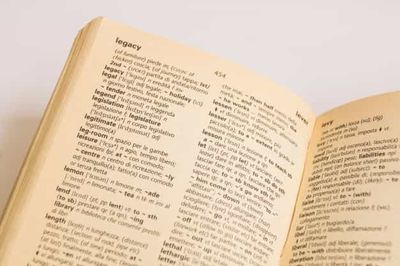Best Ways to Teach New Vocabulary to Young Students

One of the things of the English language that can make English hard to get to grips with. Vocabulary knowledge is highly correlated with reading comprehension and reading achievement. Vocabulary is required for students to achieve cognitive academic language proficiency. All good reasons to make sure that your vocabulary teaching is interesting, useful and effective.
Table of Contents
The Good Ways To Teach Vocabulary
What should we give to students with a new vocabulary
When teaching FCs for young learners, I follow these steps
These are some activities I often use when teaching with FCs:
Do you want to teach English abroad? Take a TEFL course!
This post was written by our TEFL certification graduate Thao N. Please note that this blog post might not necessarily represent the beliefs or opinions of ITTT.
The Good Ways To Teach Vocabulary
Make it interesting: this is often the hardest part of teaching vocab. We often use the flashcards (FCs) for teaching vocab to young learners. So we can use these techniques for vocabulary teaching: FCs activities (game/fun activities, building a story through FCs in lessons, worksheet, role-play, group/pair work).Keep it relevant: Don't teach words your students cannot or will not use, selecting accurate vocab. It means we have to choose vocab that appropriate to the students' age, their level, frequency and coverage, and last is teachability.
Also Read: Can couples or friends teach English abroad together?
Set achievable goals
The words you are targeting: are they suitable for the students' ability?The amount of time you give students to learn them. Generally, we introduce the words, practice through some times, and then test based on your class schedule.The number of words you set: Avoid giving long lists of words, it's better to learn 5 words well and be able to use them effectively in a sentence; than to try to learn 25 words which are then confused and forgotten.Teach words in context - I never have students write definitions of words, I much prefer that they use the words in a sentence they made on their own. They are more likely to remember the word, better at using and it's a great chance to sneak in extra writing practice.

Also Read: How does the combined TEFL course work?
What should we give to students with a new vocabulary
When teaching a new vocab, we should give them clear meaning, particularly for very young learners, show them how or when it is appropriate to use the correct pronunciation, how to spell that word, interaction, how it affects and interacts with other words.
FCS is very essential in pronunciation and vocabulary teaching, especially at the beginner level or upper-beginner levels. The use of FCs is universal in the English speaking world.
What the right FCs are
For young students, we must use FCs with size A4. Letters on FCs are in lower case. Only proper nouns should be capitalized. The color of FCs is clear, bright, interesting and fun or real.
Also Read: Can TEFL work for non-native English speaking teachers?
When teaching FCs for young learners, I follow these steps
- Show FCs with both word and picture while reading or playing its song
- Repeat the vocabulary 3 times while the students listen-only
- Choral drill, the students now repeat the vocab 5 times as a class
- Teachers use gestures or body language to express the vocab
- The teacher chooses students at random to pronounce the vocab and correct the student's pronunciation. Always start with a strong to let the shy students watch and listen.
- Activities or games with FCs they have learned.

These are some activities I often use when teaching with FCs:
1. Charades
have an S come to the front of the class and show an FC or whisper a word to that S. The S the acts out that word and the first S to guess can be the next player.
2. Picture word match race
Use two sets of picture and word cards. Mix all of the cards and give each team a set of words and pictures. The students then race to match the words and the pictures and place them together. Ask both teams to call out the words at the end so that they get practice at saying words.
Also Read: Awesome Insights into Teaching Italian Beginner Students
3. Flash the card
Flip a flashcard over very quickly so that children catch only a quick glimpse of the card. Then, invite S to guess what the item on the flashcard is. Repeat the procedure until the S guess correctly. Alternatively, cover a flashcard with a piece of paper and slowly reveal it. As it is being revealed, encourage S to guess what the item on the flashcard is. As a follow-up, repeat the word many times using different intonations or silly voices, etc. to make it fun. S will automatically mimic their teacher's voice.

4. Pass the flashcard
Hand the flashcards of the lesson out to S. Play a song from the unit and while the music is playing, have the S pass the flashcards among themselves. At random intervals, pause the music and ask whoever is holding a card to name the item on it or perform a particular task, e.g. sing a song, perform an action, etc.
5. Flashcards Station
Hand out the flashcards of the items to be reviewed. Tell the S who are holding the flashcards that they are "stations". Appoint one S in the class to be the "train". Then, call out flashcard "stations" at random. The "train" must go to the correct "station". The child holding the flashcard joins the back of the "train".
Do you want to teach English abroad? Take a TEFL course!
Apply now & get certified to teach english abroad!
Speak with an ITTT advisor today to put together your personal plan for teaching English abroad.
Send us an email or call us toll-free at 1-800-490-0531 to speak with an ITTT advisor today.
Related Articles:
- Why Complete a TEFL Course - A TEFL Graduate Explains
- Why complete a TEFL course
- 5 Reasons to Take a TEFL Course Right Now - Even If You Are Not Leaving Yet
- 5 Awesome Ways to Lead a Lifestyle as an English Teacher
- 5 Simple Tips to Improve Your Classroom Management Skills




